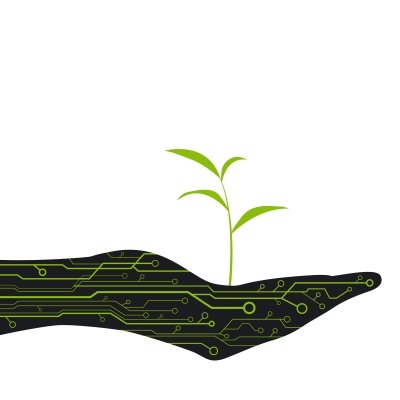Lean and Green IT – The threat of nuclear war that shrouded my generation has been overshadowed by the reality of global warming. The enemy is no longer “them” but “us”. Climate change is a battle we can fight, by rejecting apathy and taking action. Business leaders have an important opportunity to act responsibly and cut carbon emissions and corporate waste. Most companies want to reduce internal waste and emissions, but profit demands combined with weak incentives make it difficult to prioritize. The value of thrift needs to replace greed. Managers can make decisions that improve the bottom line while contributing to smart green growth.
Waste not, want not
The climate/resource crisis provides an opportunity for corporations to change their focus from short-term to sustainable profitability, and adopt strategic technological solutions that conserve resources. New industry is based on services and knowledge, where goods are delivered virtually as bits instead of as atoms. According to the ITU (International Telecommunication Union), the ICT sector is promoting the use of energy efficient devices, applications and networks, and is encouraging Green design initiatives which reduce GHG emissions. ICT helps companies replace physical goods and transport with digitalized services, and the shift from physical commodities to virtual ones has a much lighter CO2 burden. Smart sharing of services through cooperative solutions is replacing individual ownership in several areas, such as urban planning.
These trends enable sustainable growth, but still we see enormous amounts of IT resources being wasted and contributing to global warming. With high energy prices and a high carbon price tag, cutting power usage is important in Green IT, yet far greater gains can be made through IT automation and optimization of data centers. Corporate IT departments need long-lasting products instead of disposable ones. Each installation, machine and system in use can be metered, so control mechanisms and other technology can improve operational efficiency. Excess resources can be taken from one process and used in another, and products such as software licenses can be recycled. A study conducted by the Climate Group for GeSI (Global e-Sustainability Initiative) estimates the effective use of IT worldwide can reduce total emissions by 15% by 2020, while reducing global energy costs by over 500 billion Euros.
Governments act now
Governments worldwide are making policies and regulations to deal with the climate/resource crisis, and are aligning public acquisitions and services to new, smarter Green standards. Government agencies use requirements for bids and contracts to attract new, innovative technology services and products. Trade barriers and other hindrances are being removed and subsidies are being created for green technology. The financial crisis packages in 2008 and 2009 demonstrate how countries worldwide have mobilized enormous resources to support innovative solutions to climate change problems. The State of California has enacted a Green IT policy which will ensure reduced emissions by 200,000 tons per year while saving $40 million.
Paradigm shift
We are on the verge of a paradigm shift. Change is necessary and inevitable, and companies that want to survive will stay competitive by adopting new strategies and solutions. Lean and Green IT follows general business models where resources are better utilized, enabling more productivity and reducing waste.
Technological innovation and structural change will help companies adapt and grow, and create new ground rules. Legislature alone cannot create change but can help solution providers compete. In the new paradigm, as material is increasingly replaced by intelligent services, industry will move from producing disposable technology towards sustainable IT, with customer experience and satisfaction as quality factors. We will see greater industrialized reuse and recycling. Green IT initiatives supporting these trends already exist, but will be used by more businesses looking for an economic advantage while lightening their CO2 footprints.
Tailored third-party solutions, where functions are offered as adaptive services and economic and technological risk is carried by the third party, can in many cases provide the stimulus to entice users to choose a new solution. Offerings which provide greater efficiency, productivity, and more value to customers will be most popular. Cloud computing is a good example: it saves space, energy and maintenance expenses, while providing customers with flexibility and choice.
Companies who can adjust quickly to changing markets will get more out of their workforce, capital and other resources. Ineffective processes lose companies time and money, and worldwide trade losses amount to billions because of inefficient supply chains. Increasing efficiency, cutting costs, saving money and improving ROI are all important benefits of using Green IT, but helping organizations get green is essential for overcoming the climate/resource crisis.
Learn more about software license management and green IT solutions, schedule a demo and learn more on how you can help your company to reduce energy and IT costs today.





